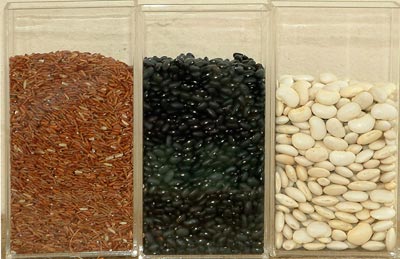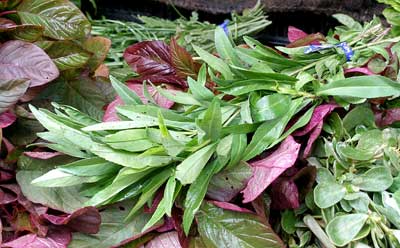
Black bean. Shiny, kidney-shaped beans with black skin, white meat and a slightly sweet flavour. They are used in feijoada and black bean stew.

A name for Tepin Giants. Giant is a relative term. These are just a little larger than the conventional Tepin chillis. As with other chillis, the Tepin Giant relies on birds for its propagation. This variety is rarely found cultivated and grows wild in southern Texas and throughout Mexico. It is wildly hot Heat = 8-9.

Black bean. Shiny, kidney-shaped beans with black skin, white meat and a slightly sweet flavour. They are used in feijoada and black bean stew.

Mexican cuisine is highly regarded by those with an understanding of it. Those with little understanding of it characterise it as consisting of tortillas, chillis, minced (US: ground) meat, chillis and tomatoes. Oh. And chillis. My own view, very unpopular, is that the predominant flavour is not chilli but the ubiquitous masa harina, corn flour slaked with lime, which is used in the breads and to bind and thicken sauces. It is in everything and, to my palate, has a penetrating flavour which overtakes every other in deeply complex moles, in crisp or soft tortillas, in cocidos and tamales.

Tomatillo. This is not strictly a tomato but a close relative. It is actually related to the physalis and, like the Cape gooseberry, has a papery covering. The original plant stock is still found growing in Central America. The yellowish-green fruit, about 4 cm (1½ inches) across, are enclosed in a papery husk. This cultivar is used extensively in Mexican salsas.

Mexican
marigold or Tagetes Lucida, is referred to as Mexican mint, as well as Mexican
tarragon, Flor de Santa Maria, Hierba de Nube, Sweet Mace, yerbaniz, and pericon.
The leaves tastes similar to French
tarragon but slightly stronger and more anise-like and both leaves and flowers
are edible. Various cultivars of the
herb are used in traditional foods from Mexico through South America. It is a
semi-woody shrubby plant, the leaves of which are shiny and green. In summer
they bear yellow flowers, hence the common name of Mexican marigold. The plant
originated in Guatemala and Oaxaca in the south of Mexico. It is an easy
perennial to grow and has naturalized and continued to hybridize around the
world.
Jicama. Mexican turnip or Mexican potato.Yambean. A crisp, turnip-like vegetable which can be cooked or eaten raw in salads.